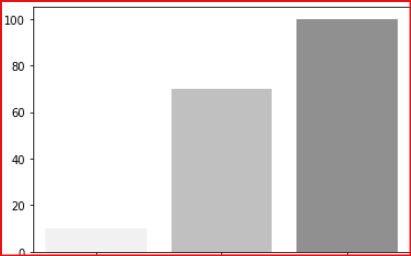
- Seaborn Tutorial
- Seaborn - Home
- Seaborn - Introduction
- Seaborn - Environment Setup
- Importing Datasets and Libraries
- Seaborn - Figure Aesthetic
- Seaborn- Color Palette
- Seaborn - Histogram
- Seaborn - Kernel Density Estimates
- Visualizing Pairwise Relationship
- Seaborn - Plotting Categorical Data
- Distribution of Observations
- Seaborn - Statistical Estimation
- Seaborn - Plotting Wide Form Data
- Multi Panel Categorical Plots
- Seaborn - Linear Relationships
- Seaborn - Facet Grid
- Seaborn - Pair Grid
- Function Reference
- Seaborn - Function Reference
- Seaborn Useful Resources
- Seaborn - Quick Guide
- Seaborn - Useful Resources
- Seaborn - Discussion
Seaborn Palette widgets - Introduction
Palette widgets can be categorized into the various three kinds. Namely, qualitative, sequential and diverging. In the coming chapters we will understand and explore all these in great detail.
Qualitative palettes
When a variable is categorical in nature, a qualitative palette is employed, and the color assigned to each group must be distinct. One color from a qualitative palette is assigned to each potential value of the variable. To understand an example of this, the following graph can be used.
sns.barplot(x=["A", "B", "C"], y=[10, 30, 23])
The following output is produced.

Sequential Palettes
Colors in successive palettes changed gradually from lighter to darker. A sequential palette can be used to represent a variable when it has numerical values or intrinsically ordered values, as seen in the figure.

Diverging palettes
Diverging palettes are the ideal for visualizing mixed value tasks, such as +ve and -ve (low and high values).
Functions
The list of all the Seaborn functions regarding Palette widgets is given below −
| S.No | Method and Description |
|---|---|
| 1 | choose_colorbrewer_palette() This method enables the user to choose colors present in the given options. |
| 2 | choose_cubehelix_palette() method This method enable widgets to choose colors in the cubehelix palette. |
| 3 | choose_light_palette() method This method is used to create a light sequential palette as an interactive widget. |
| 4 | choose_dark_palette() method This method is used to create a dark sequential palette as an interactive widget. |
| 5 | choose_diverging_palette() method This method launches a widget that enables easy access to the user in choosing a diverging palette. |